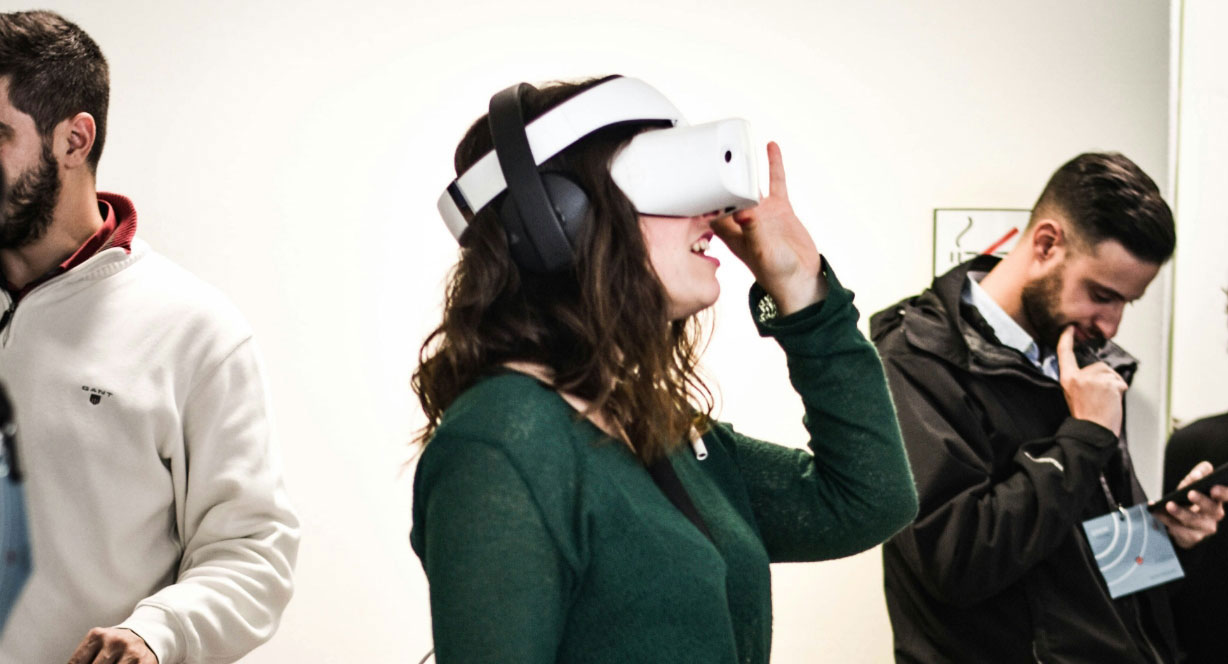
In an age where digital noise is louder than ever, brands face the continuous challenge of capturing and maintaining audience attention. Virtual Reality (VR) emerges as a groundbreaking tool in this endeavor, offering a new horizon for immersive brand storytelling. By engaging with VR, brands can transport their audiences into carefully crafted worlds that resonate on a deeply personal level.
VR’s power lies in its ability to immerse users in a completely controlled environment. This isn’t just about watching a story unfold; it’s about living it. For example, a brand that sells outdoor equipment can use VR to place customers right in the middle of a serene, sunlit forest, enhancing the emotional and sensory connection to their products. Such experiences aren’t just memorable; they forge a bond between the brand and the consumer that is difficult to achieve through traditional media.
The key to successful VR storytelling is a compelling narrative. It’s not enough to showcase stunning visuals; the story must be engaging and purpose-driven. Brands need to craft narratives that not only entertain but also embody the core values they want to communicate. A fashion brand could take viewers on a journey through the design process, from concept to catwalk, highlighting craftsmanship and creativity. This not only informs but also builds appreciation and loyalty.
Implementing VR requires understanding both its capabilities and its limits. High-quality VR experiences need not only top-notch graphics but also intuitive interfaces that feel natural to the user. Ensuring compatibility with various VR hardware and considering user comfort—minimizing issues like motion sickness—are essential for a positive experience.

The effectiveness of VR in storytelling is also measurable. Brands can track where users look, how long they engage with specific elements, and their interactions within the VR environment. This data is invaluable for understanding consumer behavior and refining future campaigns.
As VR technology becomes more accessible, its role in marketing will likely grow, offering new ways for brands to engage with their audiences. Brands that adopt this technology early and learn how to leverage it effectively will find themselves at the forefront of the next wave of digital marketing innovations.
By harnessing the power of VR, brands are not just telling stories; they are inviting their audience into them, creating profound and impactful experiences that resonate well beyond the digital realm.

In an age where digital noise is louder than ever, brands face the continuous challenge of capturing and maintaining audience attention. Virtual Reality (VR) emerges as a groundbreaking tool in this endeavor, offering a new horizon for immersive brand storytelling. By engaging with VR, brands can transport their audiences into carefully crafted worlds that resonate on a deeply personal level.
VR’s power lies in its ability to immerse users in a completely controlled environment. This isn’t just about watching a story unfold; it’s about living it. For example, a brand that sells outdoor equipment can use VR to place customers right in the middle of a serene, sunlit forest, enhancing the emotional and sensory connection to their products. Such experiences aren’t just memorable; they forge a bond between the brand and the consumer that is difficult to achieve through traditional media.
The key to successful VR storytelling is a compelling narrative. It’s not enough to showcase stunning visuals; the story must be engaging and purpose-driven. Brands need to craft narratives that not only entertain but also embody the core values they want to communicate. A fashion brand could take viewers on a journey through the design process, from concept to catwalk, highlighting craftsmanship and creativity. This not only informs but also builds appreciation and loyalty.
Implementing VR requires understanding both its capabilities and its limits. High-quality VR experiences need not only top-notch graphics but also intuitive interfaces that feel natural to the user. Ensuring compatibility with various VR hardware and considering user comfort—minimizing issues like motion sickness—are essential for a positive experience.
The effectiveness of VR in storytelling is also measurable. Brands can track where users look, how long they engage with specific elements, and their interactions within the VR environment. This data is invaluable for understanding consumer behavior and refining future campaigns.
Is your brand looking to create a uniquely immersive experience that captivates and engages? Our agency is at the forefront of VR technology, ready to help you tell your story in the most interactive way possible. Reach out to us today to explore how VR can transform your brand narrative into a memorable, multisensory journey.